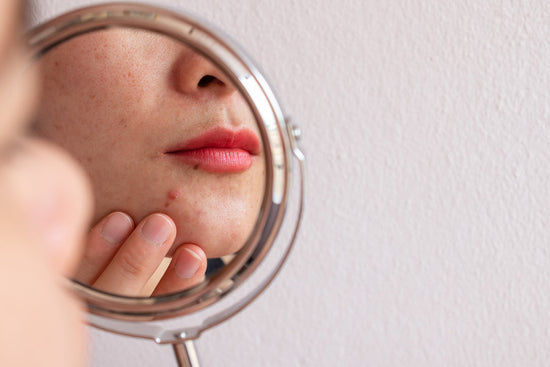That a safe contraceptive method important There is no doubt that most people think of contraception first of all Condom or the pill . However, there is now a wide range of contraceptive methods on the market, some of which are better and some worse. Then there is the question “Do I want to use hormonal contraception or go the hormone-free route?”. If you decide on the hormone-free contraception, This may also be accompanied by some headaches at first. Which Contraceptive methods without hormones are there, which are the safest and which are the healthiest? In today's blog post we would like to inform you about hormone-free contraception and give you the most important facts.
What hormone-free contraceptive methods are there?
If you choose the hormone-free contraception , a number of contraceptive methods still remain. A distinction must be made between chemical and mechanical contraceptives as well as natural contraceptive methods and sterilization We would like to briefly explain these hormone-free methods to you.
Chemical contraception
Chemical contraceptives, also Called spermicides, they kill the sperm in the vagina They are available as vaginal suppositories, creams, gels, foams and vaginal films. For greater safety, they can be used in combination with mechanical contraceptives.
Mechanical contraception
Mechanical contraceptives form a barrier and prevent sperm from reaching the egg These include the classic condom, the copper coil or other barrier methods such as the female condom or the diaphragm.
Natural contraception
In addition, it is possible to use natural contraceptive methods. For example, based on body temperature or consistency and color of cervical mucus the fertile
sterilization
Sterilization is a method of Contraception that is final Here, at a surgical intervention to severe the fallopian tubes or sperm ducts. Attention: This process is not reversible in most cases.
Find the right Taynie for you.Discover our diversity!
What is the best hormone-free contraception?
Pearl Index
Which hormone-free contraceptive is the best or most trustworthy? It is worth taking a look at the Pearl Index of the corresponding contraceptive method. The Pearl Index (PI) indicates how reliable the contraceptive method is. It is based on the frequency of pregnancies despite contraception. You can imagine it like this: 100 people use the same contraceptive method for a year and within that year 4 pregnancies occur, then the Pearl Index is 4. The smaller the Pearl Index, the higher the safety of the contraceptive.
With regard to the Pearl Index, however, you should note that manufacturers often specify the Pearl Index, which refers to safety without application errors. Others include application errors. It cannot therefore be assumed that it is generally valid and the Pearl Index is only intended as a guide.
Security
We have listed which hormone-free variants are the safest according to their Pearl Index:
1) PI 0.2 - 0.3: Sterilization
2) PI 0.3 - 0.8: copper spiral and copper chain
3) PI 0.4 - 2.3: Natural contraception: symptothermal method
4) PI 2 - 12: Condoms
5) PI 5 - 25: Femidom
But high security does not necessarily mean that a particular contraceptive method is suitable for you and is the best for you. Just as the individual methods have their advantages, they also have their disadvantages. We would now like to briefly explain what these may be.
Disadvantages of hormone-free contraceptive methods
The Copper spiral or copper chain can for example heavier menstrual bleeding and menstrual cramps cause. In addition the risk of infection increases light.
The symptothermal method At first glance, it appears to be very safe in terms of the Pearl Index, but this is only the case if it is used correctly. That means, Sexual intercourse must be avoided during the fertile period unless another method of contraception (e.g. condom) is also used.
The sterilization only comes for the Persons whose family planning is complete are eligible. So this is a decision that should be very well thought out.
Condoms On the other hand, they are a contraceptive that, when used correctly, offers reliable protection in two ways: It offers protection against pregnancy and against sexually transmitted diseases.
The situation is different with the Femidom : Although it can also protect against sexually transmitted infections, the Pearl Index is much higher and depends on the correct application. In addition, that many couples feel disturbed by the female condom during sexual intercourse.
Hormone-free contraception: What is the best alternative to the pill?
The The pill is still the most commonly used contraceptive in Germany. However, it is now the focus of much speculation, which is why many people refrain from using the pill. Side effects range from loss of libido to migraines and thrombosis. Studies also show that fewer and fewer menstruating women are taking the pill.
But which is the best alternative to the pill? Unfortunately, we have to disappoint you, because there is no such thing as THE BEST alternative to the pill. Every person is different and for each person one method of contraception works better than another. If you are not sure which contraceptive method works best for you, it is best to contact your gynecologist. They can show you the different contraceptive methods and inform you about possible risks.
What is the healthiest contraceptive?
The The easiest contraceptive to use is probably the condom. But is it also the "healthiest" form of contraception? In fact, condoms do not pose any risks or side effects. Although there are people who are allergic to latex, they can use condoms made of polyurethane. They are usually available in pharmacies.In addition, it is a contraceptive that is hormone-free. The condom is also the only contraceptive that also provides protection against HIV/AIDS. In addition, the use of condoms reduces the risk of contracting other sexually transmitted diseases.
Another “healthy” method of contraception is natural contraceptive method , where you measure your basal temperature and observe your cervical mucus. Since you are not inserting anything orally or vaginally into your body and are only paying attention to signals from your body, This could be declared a healthy method of contraception. However, as described above, please note that this method requires a certain amount of practice and is not very safe if not used correctly.
Which contraceptive is 100% safe?
In short: No contraceptive method is 100% safe. There is no contraceptive with a Pearl Index of 0. In addition, the correct use of a contraceptive method always determines how effective it is.
But we can tell you which contraceptive is currently the safest on the market. The safest method of contraception is the hormonal or contraceptive implant with a Pearl Index of 0.1 - 0.9. This is about 4 cm long and has a diameter of 2 mm. During a small surgical procedure, it is implanted under the skin, on the inside of the upper arm. Once implanted, it can remain under the skin for up to 3 years. As its name suggests, however, it is a hormonal contraception . As a hormone, Ges













